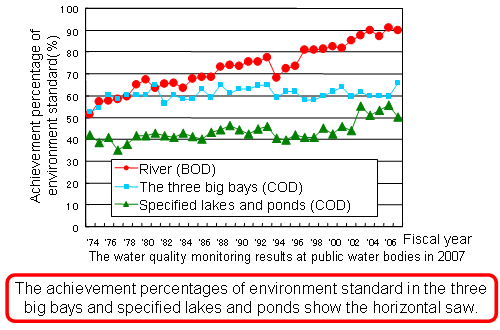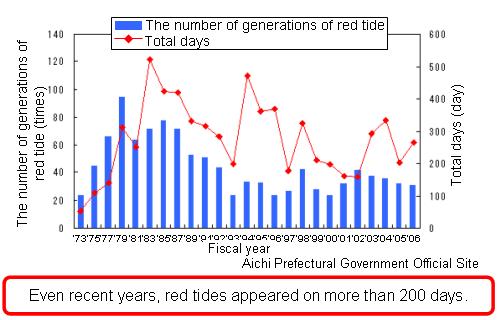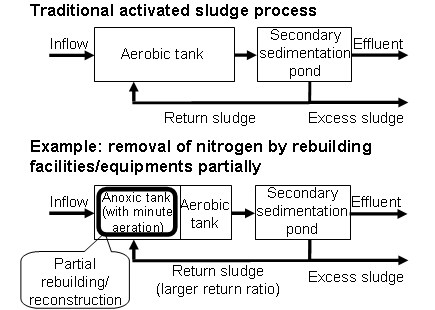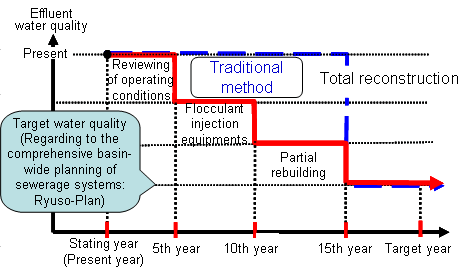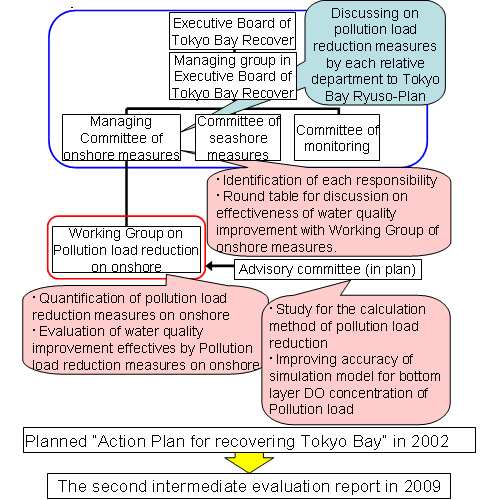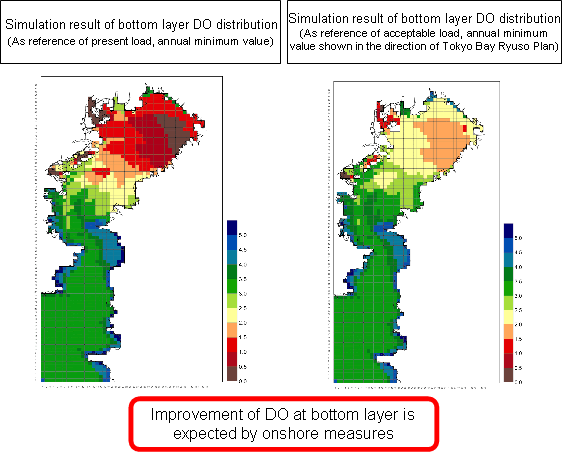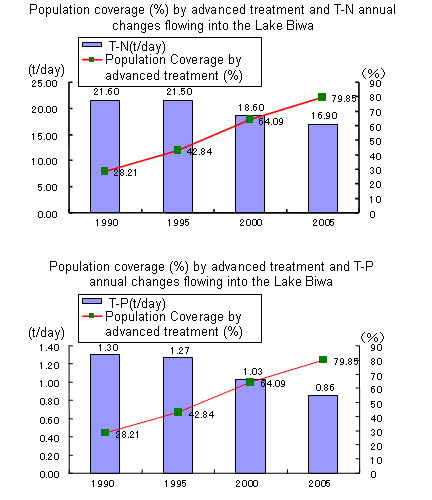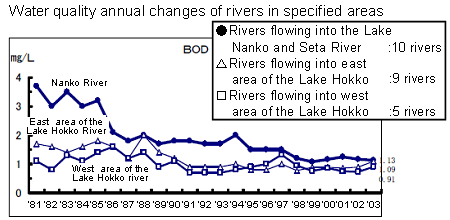Water Quality improvement in public water body
- In the main closed water bodies like the three big bays and specified lakes and ponds, serious water quality problems affect water industry, ecosystem and landscape, which are caused by eutrophication generating red-tide, blue-tide and green algae etc.
- For improving water quality in closed water bodies, not only measures to pollution load accumulated for a long time but also reduction of inflow pollution load as the early stage are necessary.
- To reduce inflow amount of nitrogen and phosphorus which cause eutrophication, introducing the advanced treatment processes is implemented, and also to improve effluent quality, introducing the advanced treatment processes are introduced step by step by rebuilding facilities/equipments partially even in operated WWTP with the traditional activated sludge process.
- Firstly structuring a system to discuss and identify each responsibility for reduction of pollution load with cooperation of initially sewage managers, representatives of relative departments like river, environment and agriculture/forest etc. As a second step, implementation of water quality improvement with a unified group of all representatives in the basin is important.
Annual changes of achievement percentage of environment standard
Annual changes of achievement percentage of environment standard
Generation status of red-tide in Ise-Bay and Mikawa-Bay
Generation status of red-tide in Ise-Bay and Mikawa-Bay
Improvement of effluent quality by rebuilding facilities/equipments partially
- By rebuilding facilities/equipments partially, improving effluent quality is implemented step by step for achieving water quality of public water bodies in early stage.
A case of a proposed method as the circulated nitrification-denitrification process
Progressive construction plan chart with advanced treatment processes
Structuring a system to implement reduction of pollution load with cooperation of managers, representatives of relative departments to river basins.
Activities to reduce polluted load with cooperation of representatives of relative departments (a case of recovering Tokyo Bay)
- As there are many relative departments/organizations like river, harbours, environment, agriculture/forestry and sewage etc for improving water quality in Tokyo Bay, three steps are important for progressing improvement of water quality, 1) cooperation of these many representatives, 2)identification of each responsibility for pollution load reduction and 3) carrying out the measures with each responsibility.
The framework of the Executive Board of Tokyo Bay Recover
Calculations of bottom layer DO with simulation model
Effectiveness of facilities
- Inflow volume of nitrogen and phosphorus into the Lake Biwa is expected to reduce by introducing the advanced treatment process.
- At the Lake Biwa, water quality of rivers flowing into the lake has been improving year by year because of construction and operation of sewage systems
Population coverage (%) by advanced treatment and T-N annual changes flowing into the Lake Biwa
Water quality changes or rivers flowing into the Lake Biwa (Shiga Prefecture)
